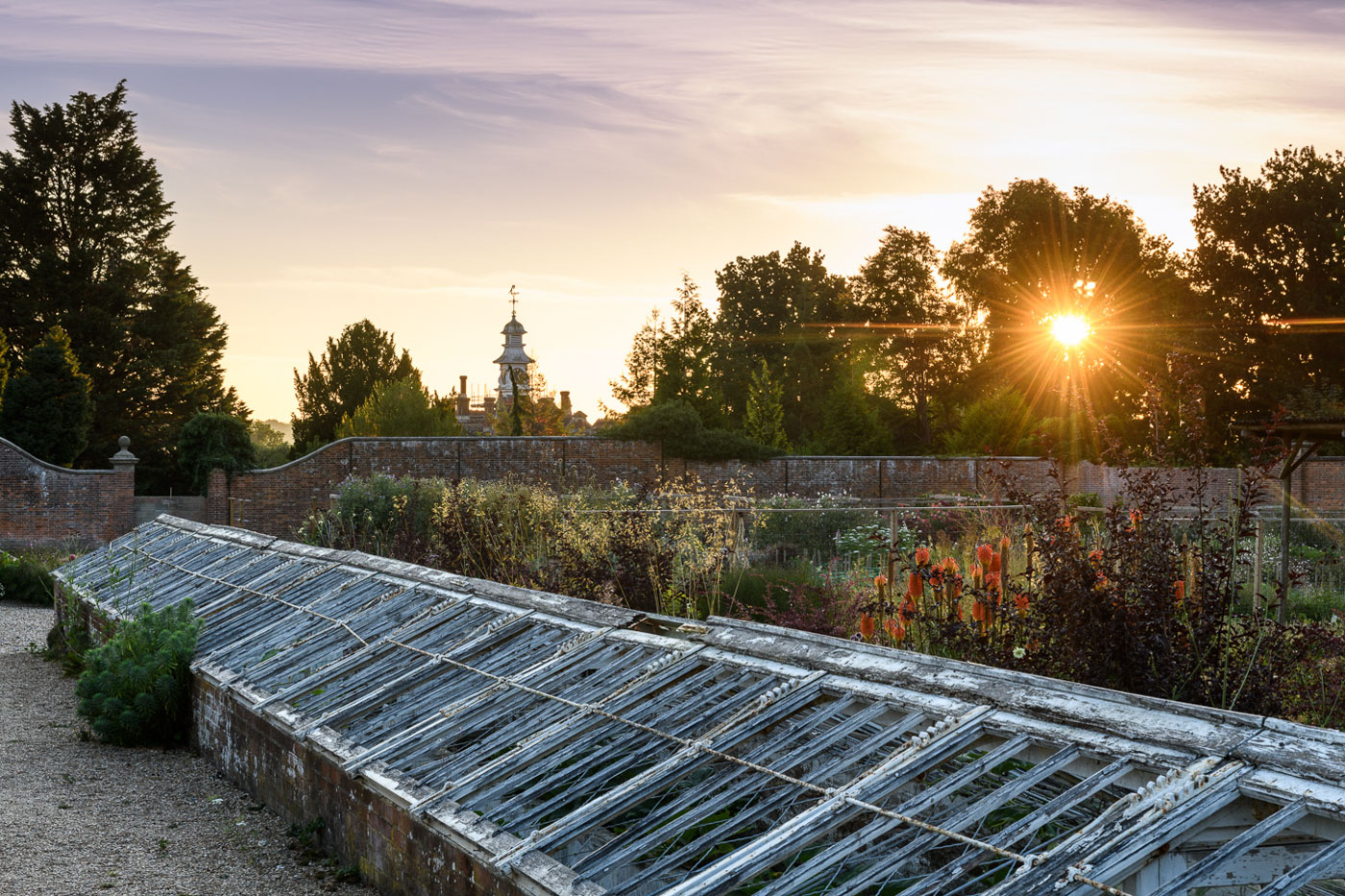
Walled Garden Restoration of Water Lane, Kent
Recreating a productive heritage garden by Jo Thompson
Water Lane is a Victorian two-acre walled garden near Hawkhurst in the High Weald of Kent. The original site is a historical horticultural masterpiece with 13 Grade II Victorian glasshouses dating back to the 1800s on what was once the Tongswood Estate. The whole site is being sympathetically transformed into a productive garden for the 21st century by Jo Thompson and will include 72 no-dig vegetable and cut flower beds for the restaurant and wholesale to local florists, stock and trial beds, restored vinery, outside spaces and a pavilion.
The plans for Water Lane will progress in phases and will include a rose ‘orchard’ with bulb meadow; a quince tree avenue through the green gates of the pedestrian entrance; perennial and stock beds in the south quadrant; follies and wall borders, a fruit cage pergola; children’s natural play; a forest garden and sculpture trail, nuttery and educational spaces. This summer’s planting palette includes soft purples, pinks, raspberry and apricot tones from plants such Cosmos bipinnatus ‘Apricot Lemonade’; Dahlia ‘Penhill Watermelon’; Phlox drummondii ‘Crème Brulee’; Gladiolus papilo ‘Ruby’; Althea cannabina; Erigeron karvinskianus and Ammi visnaga.
Jo Thompson says, “The extensive and long-term restoration vision for Water Lane, led by Nick Selby and Ian James, is a garden designer’s absolute dream. I am excited to peel back the layers of this historic site and truly understand its history as a horticultural masterpiece. This is not just any restored walled garden project but a chance to re-imagine Water Lane the ‘place’, respecting its past glory as well as making it an inspirational and welcoming garden for the 21st century and beyond.”
Water Lane, previously known as ‘Tongswood Gardens’, belonged to the Tongswood estate, its name deriving from the Old English ‘Twang’ or ‘Tang’ meaning ‘fork of water’ in reference to the two streams of the river Rother which ran through the estate. Having passed through many families, the estate was bought by Mr Charles Gunther in 1903. In its heyday the two-acre walled garden employed nine gardeners who tended the 13 Victorian greenhouses, including a vinery, peach house, melon house, fern house, fruit house and carnation house. The garden produced beautiful flowers, fruit and vegetables providing ample for the main house, the house in London and even a van of surplus for the local hospital.
